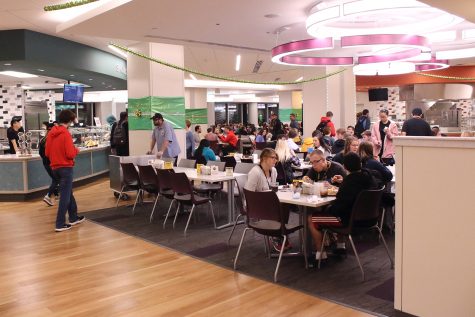Kumar: Poverty and homelessness persists in Iowa City
Community organizations are providing amazing opportunities for the homeless and low income population in Johnson County, but nothing will change unless the city takes more steps to make affordable housing a reality.
December 4, 2018
Walking around downtown Iowa City, you’re bound to notice a few things: the construction on the Pedestrian Mall, the holiday decorations, and people on street corners asking for money.
While the holiday deco rations may not be a permanent fixture, it is common to see people sleeping on the Ped Mall benches or asking for money. It can be easy for college students to brush off the topic of homelessness or poverty, but the problem is deeply rooted and affects many of our peers.
RELATED: Banerjee: New Ped Mall benches discriminate against homeless
As of 2018, the poverty rate in Johnson County is on the rise. While the population of low-income, food-insecure, or homeless people in Iowa is lower than other states, the problem is becoming more prevalent locally. Of around 146,000 Johnson County residents, 17.9 percent lived in poverty in 2016, Data USA reports. Often, the cause is economical or health-related.
It’s no surprise that this problem exists and is on the rise in part based on economic reasons. Johnson County has one of the highest costs of living in the state and is only slightly more expensive than the national average.
RELATED: Newby: Off-campus living pushes poverty statistics higher
Affordable housing is extremely hard to come by as well. Anyone who has ever tried to find a place to rent in Iowa City knows this.
College students are famously poor and are included in the homelessness and poverty rate.
The Center for Law and Social Policy estimates between 22 percent and 33 percent of college students are food-insecure, placing them in the precarious position of having to choose between having enough money for rent or having a meal.
In addition to the financial burdens that lead to homelessness, food insecurity, and poverty, mental health is another glaring cause. In 2016, Iowa was ranked last in the country for mental-health services, according to the Treatment Advocacy Center in Virginia. Between the shortage of treatment options, beds, and access to care, Iowans don’t have it easy, especially those who are dealing with housing and income issues.
RELATED: Johnson County makes plans to address poverty
In Iowa City, there are amazing organizations dedicated to helping those facing homelessness, food insecurity, and poverty. Shelter House, the Crisis Center, and Hawkeye Area Community Action Program are just a few organizations that are equipped to help in an emergency. In fact, Shelter House is funding a housing project for those who are chronically homeless to support the “housing first” initiative. With another Iowa winter already upon us, support for these organizations is more critical than ever.
The city itself, however, could do a lot more to help combat this issue, starting with affordable housing. It’s necessary not only for students but for families. The extent and success of the housing assistance and rehabilitation opportunities available, as well as the city’s action plan, is unknown. Despite adopting the Affordable Housing Action Plan two years ago and offering financial incentives for developers, the problem persists and will grow as the city and surrounding areas continue to develop.





















